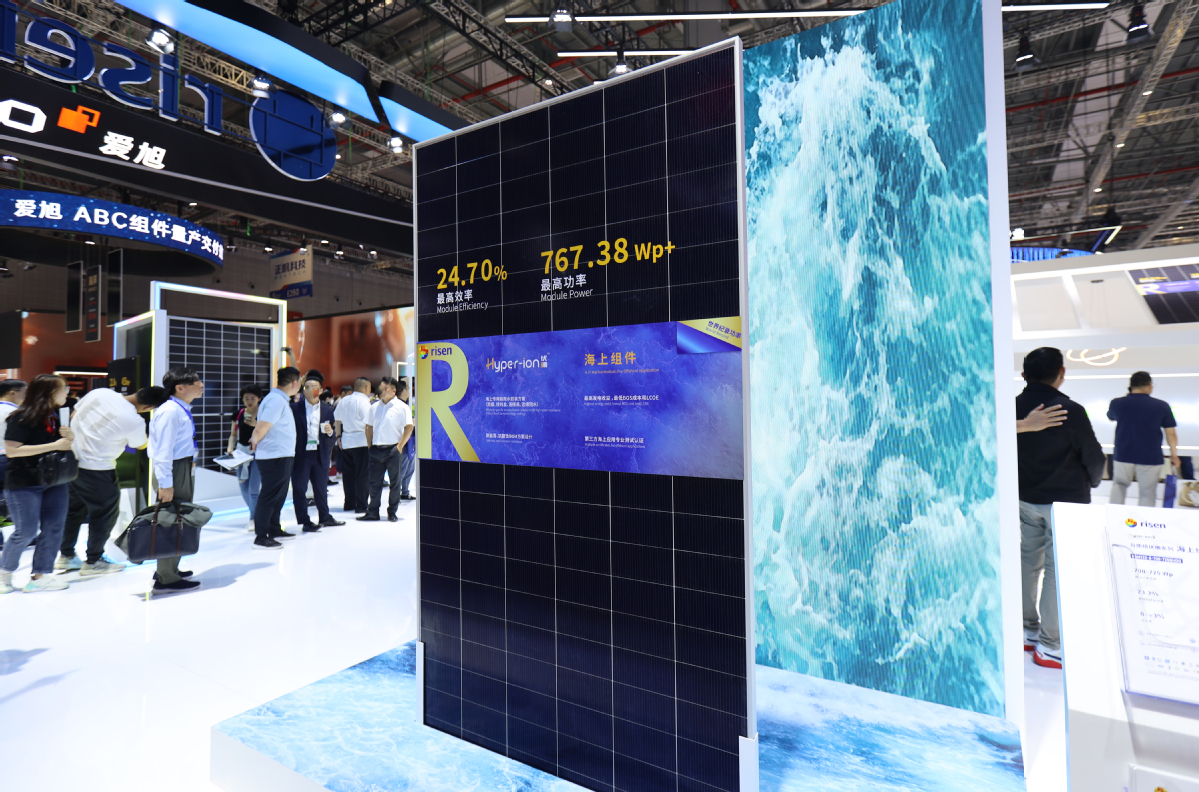Shanghai sets ball rolling on offshore PVs
Metropolis aims for a minimum 1m kW by year end with 1st batch of projects
By LIU YUKUN | China Daily | Updated: 2024-08-29 09:38

Shanghai will begin the first round of selections for offshore solar power generation projects with a minimum scale of 1 million kilowatts by the end of this year, according to the Shanghai Municipal Development and Reform Commission.
The move is part of the country's stepped-up efforts to promote the development of offshore solar energy.
The selected projects will have assured integration of solar power to the grid instead of trading in the electricity market.
Investors in such projects will be encouraged to deploy energy storage facilities as needed, the city's economic regulator said recently.
Offshore photovoltaics were first proposed by the National Energy Administration in April last year.
Experts said there is significant growth potential for offshore photovoltaics, which leverage vast ocean areas and abundant sunlight to overcome land limitations and provide a new platform for solar power generation.
Offshore photovoltaics also ease energy supply pressures in the eastern regions of China, and boost economic growth.
Recent advancements in offshore photovoltaic technology and decreasing installation costs have enhanced its competitiveness in the energy market, experts said.
With further policy support, offshore photovoltaics will have massive opportunities for development. Their integration with offshore wind power and marine ranching will lead to a diversified industrial development model, they added.
Lin Boqiang, head of the China Institute for Studies in Energy Policy at Xiamen University, said China's photovoltaic industry is unevenly distributed, with most large-scale solar power generation stations concentrated in the resource-rich Northwest China, while eastern areas have intense demand for electricity where solar stations are few due to high land costs and other resource limitations.
Given the intermittent nature of photovoltaic power, some grids are not yet capable of handling large-scale solar power, as they could cause turbulence in power loads due to varying levels of sunlight. In the past, most grids were optimized for the transmission of steady volumes of power derived from fossil fuels.
Coupled with the additional costs and energy losses from long-distance power transmission through the grid, offshore photovoltaics seems more appealing to coastal provinces. Offshore photovoltaics can utilize tidal flats, islands, nearshore areas and even deep-sea locations, helping to alleviate land resource constraints, Lin said.
Before Shanghai's initiative to develop offshore solar power, provinces like Shandong and Zhejiang had already introduced policies to promote the development of offshore photovoltaics.
Shandong province, for example, has encouraged the integrated development of pile-based offshore photovoltaic projects combined with activities such as marine ranching, salt fields and wind farms.
"There are positive developments in offshore photovoltaic projects in China. National policies have clarified four types of photovoltaic sea usage, leading to significant progress on relevant projects. Reports indicate that about 30 gigawatts of offshore photovoltaic projects have been announced or initiated recently," said Jiang Hua, deputy secretary-general of the China Photovoltaic Industry Association.
"Additionally, the industry's ongoing cost reductions and efficiency improvements have broadened its economic potential," he said.
Cui Lin, deputy secretary-general of the offshore photovoltaic professional committee of CPIA, said the rapid development of offshore solar power will give rise to emerging sectors like hydrogen production from seawater using offshore photovoltaics.
























